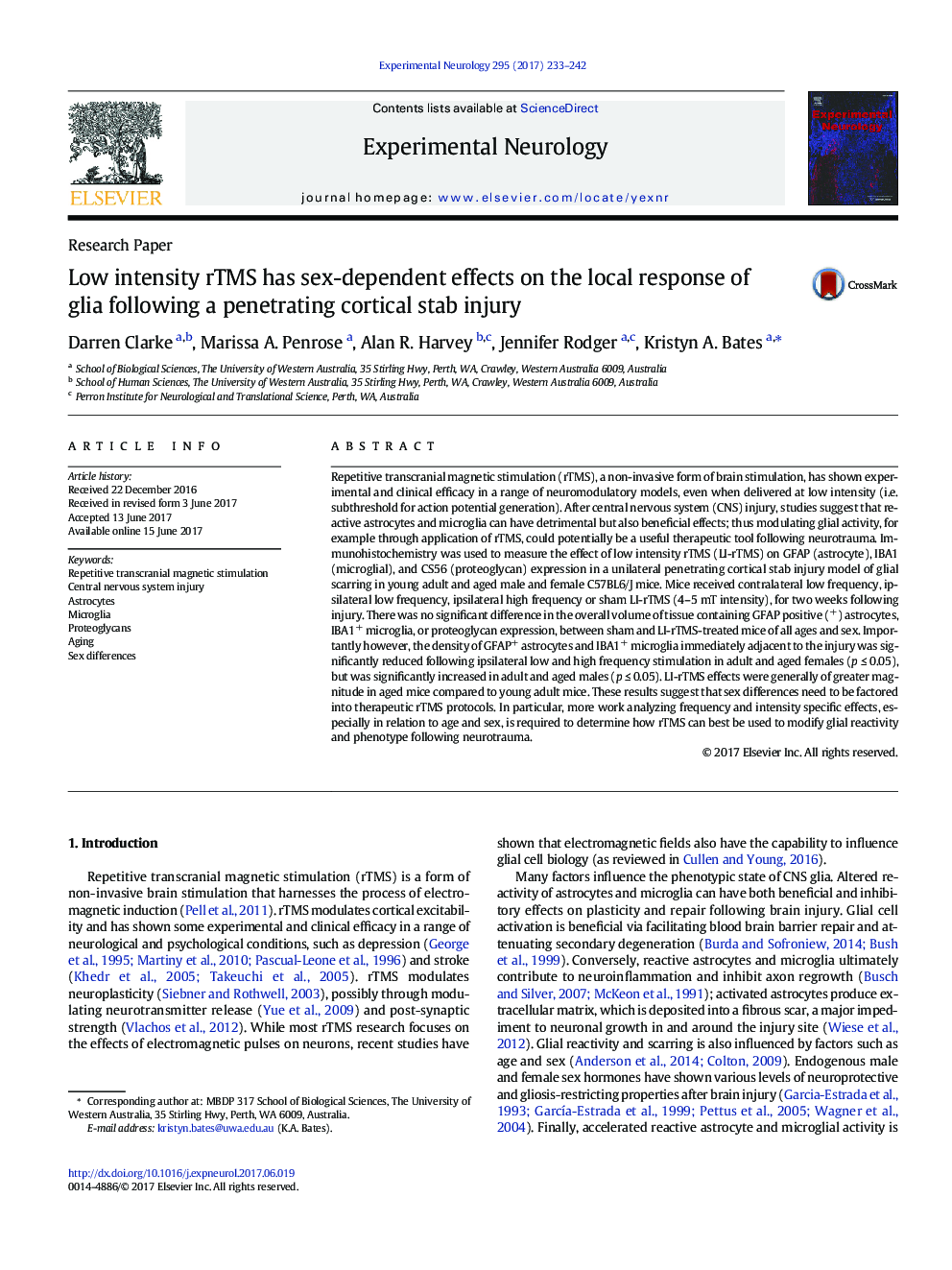| کد مقاله | کد نشریه | سال انتشار | مقاله انگلیسی | نسخه تمام متن |
|---|---|---|---|---|
| 5629122 | 1580144 | 2017 | 10 صفحه PDF | دانلود رایگان |

- Low intensity rTMS reduced the density of GFAP+ cells and IBA1+ cells around the injury site in adult and aged female mice.
- Low intensity rTMS increased the density of GFAP+ cells and IBA1+ cells around the injury site in adult and aged male mice.
- Low intensity rTMS did not affect the volume of the glial scar or chondroitin sulfate expression.
Repetitive transcranial magnetic stimulation (rTMS), a non-invasive form of brain stimulation, has shown experimental and clinical efficacy in a range of neuromodulatory models, even when delivered at low intensity (i.e. subthreshold for action potential generation). After central nervous system (CNS) injury, studies suggest that reactive astrocytes and microglia can have detrimental but also beneficial effects; thus modulating glial activity, for example through application of rTMS, could potentially be a useful therapeutic tool following neurotrauma. Immunohistochemistry was used to measure the effect of low intensity rTMS (LI-rTMS) on GFAP (astrocyte), IBA1 (microglial), and CS56 (proteoglycan) expression in a unilateral penetrating cortical stab injury model of glial scarring in young adult and aged male and female C57BL6/J mice. Mice received contralateral low frequency, ipsilateral low frequency, ipsilateral high frequency or sham LI-rTMS (4-5 mT intensity), for two weeks following injury. There was no significant difference in the overall volume of tissue containing GFAP positive (+) astrocytes, IBA1+ microglia, or proteoglycan expression, between sham and LI-rTMS-treated mice of all ages and sex. Importantly however, the density of GFAP+ astrocytes and IBA1+ microglia immediately adjacent to the injury was significantly reduced following ipsilateral low and high frequency stimulation in adult and aged females (p â¤Â 0.05), but was significantly increased in adult and aged males (p â¤Â 0.05). LI-rTMS effects were generally of greater magnitude in aged mice compared to young adult mice. These results suggest that sex differences need to be factored into therapeutic rTMS protocols. In particular, more work analyzing frequency and intensity specific effects, especially in relation to age and sex, is required to determine how rTMS can best be used to modify glial reactivity and phenotype following neurotrauma.
Journal: Experimental Neurology - Volume 295, September 2017, Pages 233-242